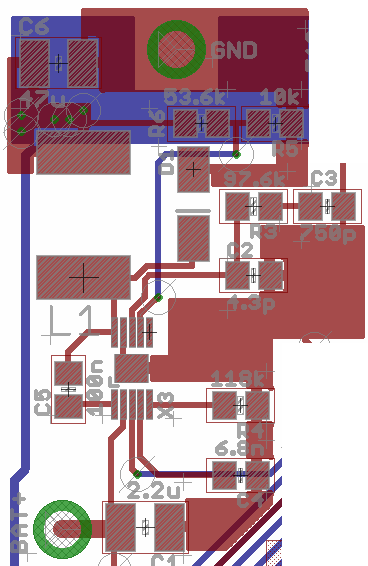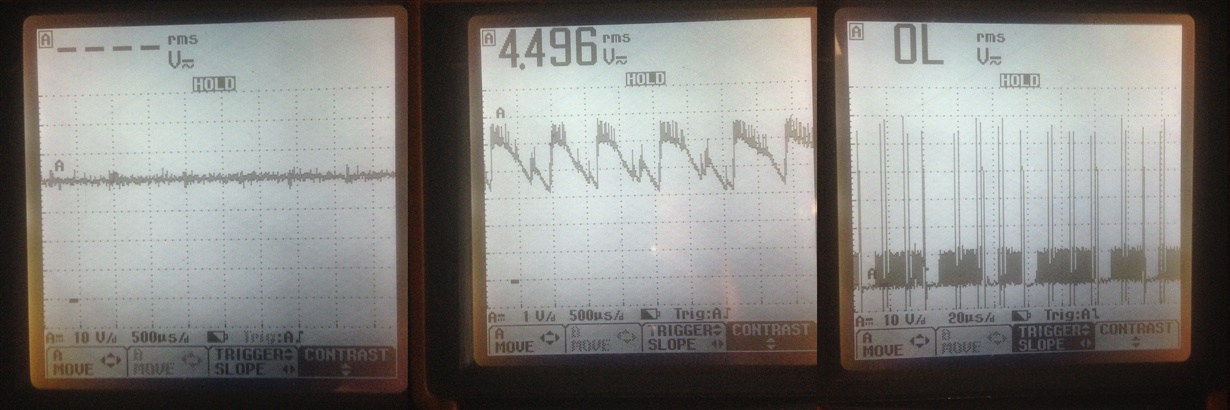Hello,
I just finished building a board using the TPS57160-Q1 buck converter and as soon as the input voltage gets over about 30-35 Volts (We have an input voltage varying between 25V and 40V), we experience audible ringing of the buck converter and a kind of instability.
The needed output voltage is 5V, but with an input voltage of 35V and a load of 50-200mA @ 5V, we experience a high frequency toggling of the output voltage between 4V and 6V. The ringing/instability starts at about 20V and gets gradually worse with higher voltage. The component values were chosen by using the Webench-Designer: http://webench.ti.com/webench5/power/webench5.cgi?base_pn=TPS57160-Q1&Flavor=NA&AppType=None&topology=&optFactor=1&VinMin=10.8&VinMax=44&O1I=0.9&O1V=5&op_TA=30&application=POWER&origin=pf_panel
I would greatly appreciate if you could take a look at this design. I have attached both the schematic and the (hopefully readable) part of the PCB layout.
Thank you very much in advance




